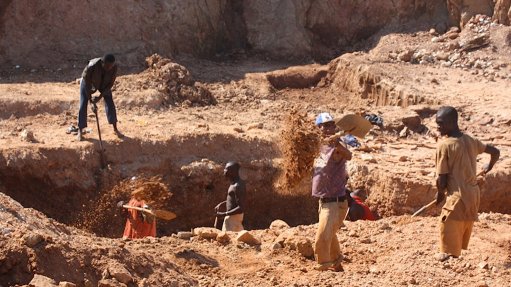
ALL-ENCOMPASSING THREAT Illegal mining – whether on the surface, underground, at operational mines or at mines that have been decommissioned – is a huge challenge that the mining industry is facing
Mining engineering consultancy services provider Jonrik Mining & Engineering national security and industrial relations manager Dean Millar says, according to his information and feedback he has received from local mining companies, criminal mining syndicates in South Africa have increased significantly over the past two years.
He says this is because of factors such as the increased value of gold in rand terms, high levels of unemployment and the improved operational capacity of illegal mining networks.
Illegal mining – whether on the surface, underground, at operational mines or at mines that have been decommissioned – is a huge challenge facing the mining industry, Millar adds.
“Initially, the syndicates were small in number and they operated in working areas during off-shift periods, weekends or holidays. The majority avoided contact with mine employees, trying to stay unnoticed, and did not steal equipment and/or interfere with mining operations.”
However, Millar says that, over the years, criminal miner numbers have increased and syndicates have started operating far more openly and acting significantly more aggressively.
“Employees are intimidated by these illegal miners who are often heavily armed with firearms and/or explosives. Illegal miners often rob not only mineworkers but also one another, which, on many occasions, results in severe safety and production problems on mines,” he emphasises.
The sentiment among many mine management teams is that the seriousness of this criminal problem has not been fully understood by government and, for this reason, not enough attention is paid to this growing national challenge at mines, Millar avers.
Prevention
Millar believes that it is possible to prevent illegal mining at mines by establishing effective security initiatives and implementing the correct systems.
He says the first step is for mines to establish ad hoc and project-driven investigations, and to prosecute staff who have been found to aid and abet those involved in illegal mining.
“This includes stopping corrupt behaviour of mining contractors and the mine’s own personnel,” states Millar.
He further notes that mines must foster better communication channels and involve the police and the National Prosecuting Authority in their efforts to combat illegal mining.
It is important for mines to build on their existing intelligence networks to ensure that they are notified as early as possible of illegal mining activities, and of the size of the problem, to ensure it is dealt with effectively, Millar adds.
He recommends that mines undertake other security measures, such as introducing stricter access control at the crush and bank areas of a mine, regular audits of the composition of the gangs involved in the syndicates and of the areas they are targeting, installing additional closed-circuit television cameras in identified hot spots and introducing new access cards for all mine employees.
He further advocates that anyone who is not an employee of a mine should be granted access to the premises only by appointment that, in turn, should be approved by the security manager.
Millar says very strict control measures should be implemented at the last access point before employees enter the cage area and further recommends the installation of man-trap turnstiles to prevent people from illegally gaining entrance by entering with a mine employee, commonly called ‘double clocking’.
Moreover, he states that, particularly for underground operations, companies should maintain the presence of static guards at strategically defined hot spots and that spot checks should be conducted on any employee found walking around underground alone.
“Underground mines should also have . . . security teams consisting of at least four personnel constantly sweeping high-risk areas . . . special attention should be given to working areas controlled by contractors, particularly with the opening of a new working area . . . where high-grade reef has been indentified,” he says.
Millar was speaking at business-to-business events organiser Fleming Gulf’s 2015 African Mine Security Summit, held in Johannesburg last month.